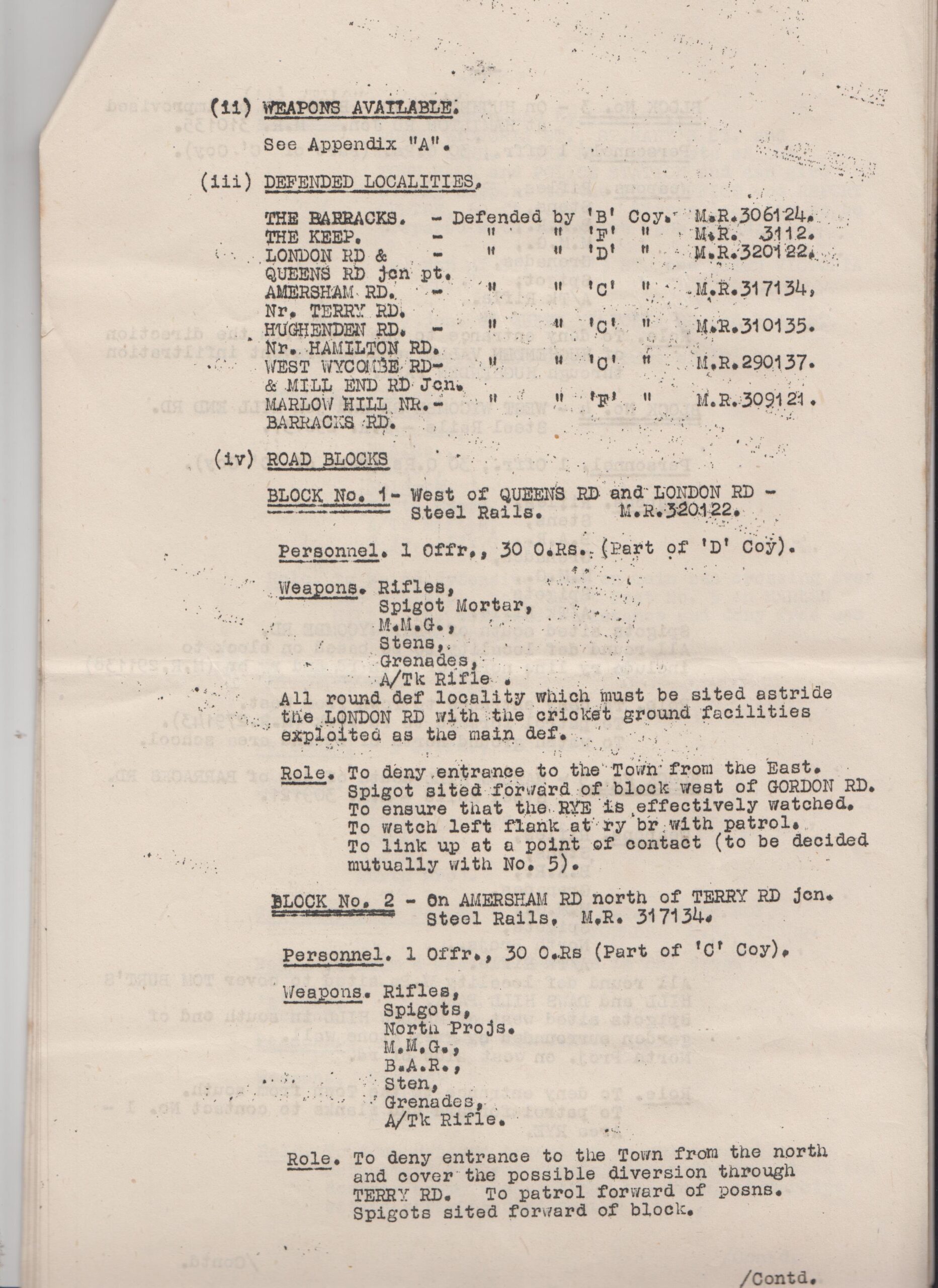A copy of the plan for the static defence of High Wycombe is part of a large amount of Home Guard documentary material in the papers of 2nd Lieutenant Arthur Searby (1908-90) of No 9 Platoon, ‘C’ Company of the 7th Battalion Bucks Home Guard recently acquired by the Trust at auction. Born in Halifax, Searby appears to have been a manager for Messrs. Broom & Wade, which made machines for Wycombe’s pre-war furniture trade and then turned to war production of compressed air equipment, pneumatic tools, and Churchill tanks. One of the first members of the Local Defence Volunteers in 1940, Searby was commissioned in March 1943. He lived first in Hughenden Road and then in Totteridge. Searby’s copy of the scheme is marked as No 23 from 72 issued.
High Wycombe had been designated as an ‘anti-tank island’ in January 1941 until the possibility of armoured attack was ruled out in May 1942. Thereafter Wycombe was a ‘centre of resistance’ with 7th Battalion not only responsible for static defence by means largely of road blocks and specific ‘defended localities’ but also the defence of six ‘vulnerable points’ including Messrs. Marconi Instruments, Messrs. Magnesium Castings & Products, and the town’s telephone exchange and electricity works, as well as important installations such as railway bridges. The scheme goes into great detail on the manning of strong points and of observation posts including the ‘Druid’s Hut’ at West Wycombe, patrol areas, immobilisation of petrol supplies, and listing of earmarked transport.
The Municipal Offices were designated the overall ‘Battle Headquarters’ with the Barracks that for battalion and most but not all of the company headquarters. ‘A’ Company, for example, had its headquarters in the Black Boy Yard at West Wycombe and ‘D’ Company in Aldridge’s Orchard in Cock Lane, Wycombe Marsh. The ‘Keep’ of last resort comprised an area including the Town Hall and the Police Station, the suggestion being that the three officers and 100 other ranks of ‘F’ Company intended as its defenders could give ‘strong support’ to the Post Office. At this point, the battalion mustered 81 officers and 1,736 other ranks. Weaponry had improved substantially since the immediate threat of invasion in 1940. ‘D’ Company, mentioned in the extract of the scheme shown here, now had 80 rifles, 90 Sten guns, 2 Browning automatic rifles, two Spigot mortars, 2 Northover projectors, and a large number of grenades.
Among its collection, the Trust also has the ‘F’ Company Roll Book for 7th Battalion whilst a well-known publication is S. L. Miller’s verse history of ‘E’ Company, Old Buck. Searby was clearly a conscientious member of the Home Guard for, apart from a large correspondence file, Searby’s collection includes no less than 32 official training pamphlets, and 17 commercial publications such as the evocative Rough Stuff for Home Guards by Sidney Duffield and Andrew Elliot, published as a guide to close quarter and hand-to-hand fighting in 1942 and priced 1s.6d.
